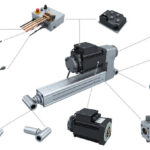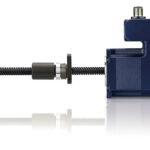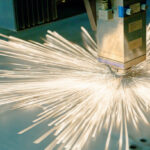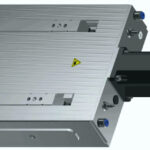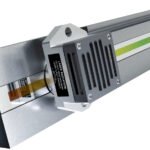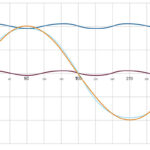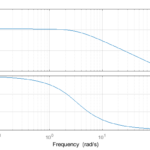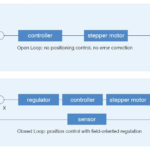The new e-MOVEKIT from Ewellix is aimed at helping designers and manufacturers of mobile machinery simplify the specification, assembly, and testing of electric linear actuation systems. The e-MOVEKIT has been developed in response to the growing trend towards electrification of motion systems in mobile and off-highway equipment. In particular, the demand to replace traditional hydraulic […]
Controls for linear axes
Linear actuator features integrated controller
With the PSA56, Nanotec launches its first linear actuator with integrated controller. This extremely compact drive unit combines the LSA56 hybrid linear actuator and the intelligent controllers of Nanotec’s PD4-E series. The integrated magnetic single-turn absolute encoder has a resolution of 1,024 CPR and supports field-oriented control via CANopen. The screw’s protective coating is made […]
A better control method for laser materials processing: Part 2 of 2
(This is the second article in a two-part series, the first of which can be found here.) Dr. Cliff Jolliffe Head of Automation Market Segment Physik Instrumente (PI) GmbH Modular controllers offer an easy and straightforward way to link a laser to multi-axis positioning systems. For instance, PI’s ACS Laser Control Module (LCM) introduces a […]
A better control method for laser materials processing: Part 1 of 2
New modular controllers offer flexible solutions for linking a laser to multi-axis positioning, making it easier for system integrators to design and build advanced systems for a new age of laser applications. Dr. Cliff Jolliffe Head of Automation Market Segment Physik Instrumente (PI) GmbH This is Part 1 of a 2-part series of articles on […]
Linear axis provides precision, stability for semiconductor manufacturing equipment
With the new TBS Linear Axis offering from ETEL, semiconductor equipment manufacturers can now integrate a high-precision linear axis enabling outstanding performance in term of accuracy and precision in its category of one-Degree-Of-Freedom (1-DOF) systems. With its ISO 2 rating for cleanrooms and incorporated HEIDENHAIN Group encoder technologies, the TBS provides high cleanliness and accuracy […]
Choosing linear and angle encoders for semiconductor machinery
The manufacture and testing of semiconductors involves the competing requirements of nanometer positioning and high throughput. Here, the right encoder can help motion designs deliver on both counts. By HEIDENHAIN CORPORATION staff engineers Semiconductor manufacturing and testing equipment can have the best motion-control bandwidth, artificial intelligence capabilities, and optics in the world, but none of […]
What is torque ripple and how does it affect linear motion applications?
Motors produce torque and rotation through the interaction of magnetic fields in the rotor and the stator. In an ideal motor — with mechanical components that are perfectly machined and assembled and electrical fields that build and decay instantaneously — torque output would be perfectly smooth, with no variations. But in the real world, there […]
What does bandwidth refer to in the context of servo systems?
Most people are familiar with bandwidth as it relates to networking and WiFi service — for example, the 2.4 GHz and 5 GHz frequency bands on which WiFi signals are transmitted. But bandwidth also plays an important role in servo control and tuning. The bandwidth of a servo control system indicates how quickly the system […]
When does open-loop stepper control still make sense?
Stepper motors are inherently open-loop devices, able to make precise moves without feedback regarding motor position. But one of the drawbacks of using stepper motors in some applications is that if steps are lost (or gained), the system has no way to detect this. The resulting discrepancy between the actual position of the motor and […]
Ride the wave of electrification: Off-highway designs with linear actuators
The transition of mobile machinery and off-highway equipment away from fossil fuels may be a long-term goal, but electrification is already delivering real benefits in the sector. By Tarek Bugaighis • Ewellix Is the era of the internal combustion engine coming to end? Under pressure to reduce harmful emissions, the automotive industry is already gearing […]

